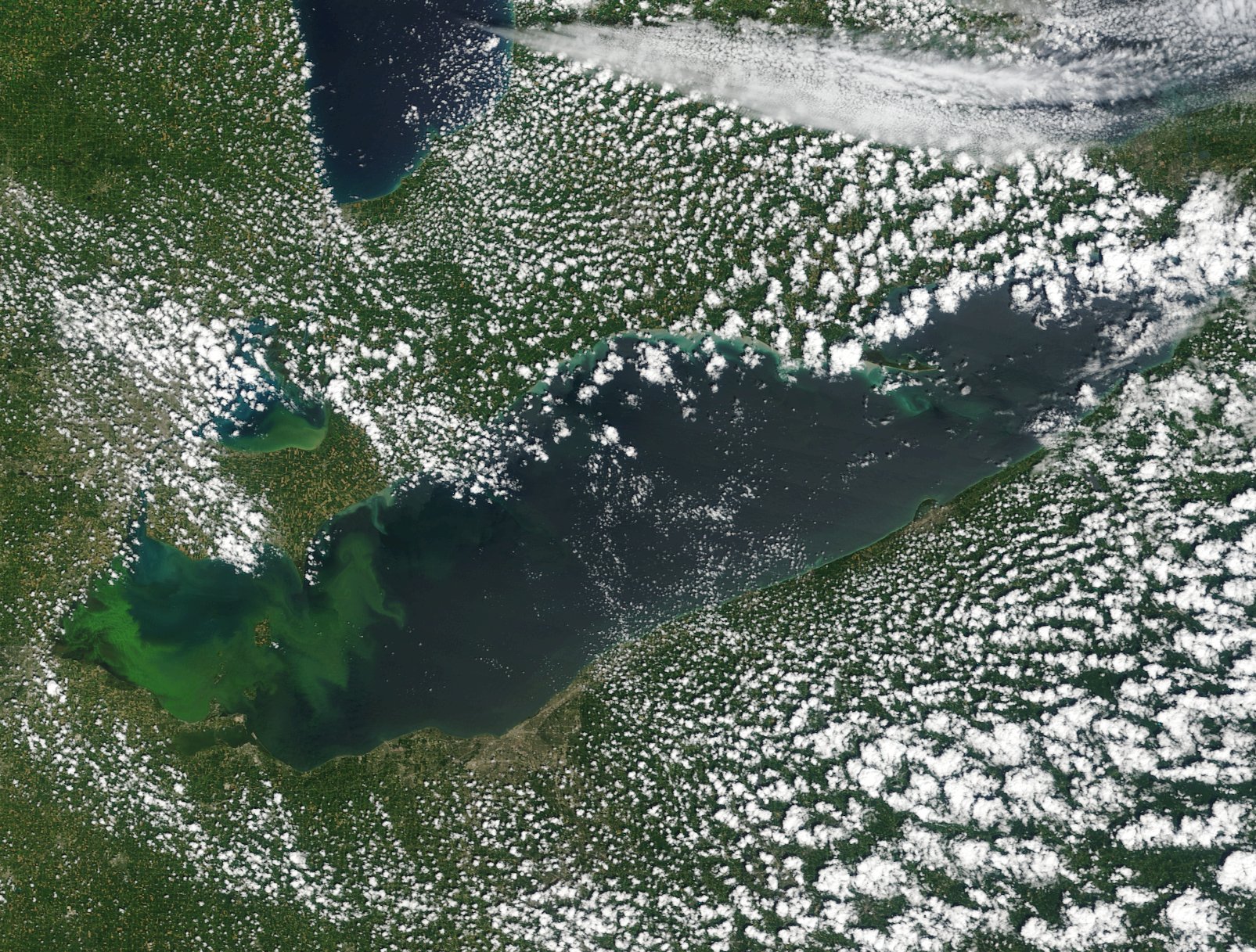Algae Bloom Grows in Lake Erie, but Size Does Not Increase Threat [Link+Color Maps]
This summer’s algae bloom is larger than the one that contaminated Toledo’s water in 2014.

Scientists say a harmful algal bloom in western Lake Erie is larger than one that polluted Toledo’s water system in August 2014. That’s when toxins in the water forced almost a half-million people in Ohio and Michigan to drink bottled water for a few days. National Oceanic and Atmospheric Administration researcher Tim Davis tells WDET’s Pat Batcheller just because the bloom is bigger now doesn’t mean it’s a greater threat to public health. Davis says communities that draw water from Lake Erie are equipped to detect and remove toxins such as microcystin, a liver poison that can be fatal. Davis says heavy rain in June washed algae-feeding chemicals from farmland into the Maumee River, which empties into the lake. Toledo officials say they have detected microcystin in the city’s water intake crib in Lake Erie, but not in the tap water. The Ohio Department of Health has issued a public health advisory after high levels of microcystin were found in the lake at Maumee Bay State Park. Officials say elderly park users, young children, and people with health problems should avoid the lake. Click on the player above to hear the conversation.
Here’s a link to NOAA’s algae bloom web site. The latest algae bulletin is below.

